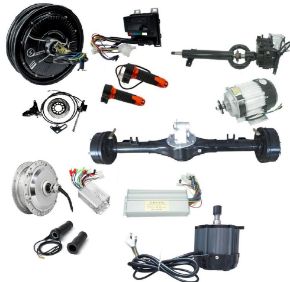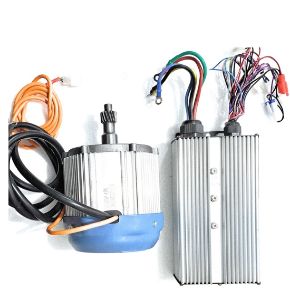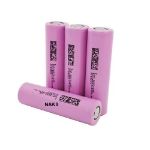Here is a detailed technical comparison table between lithium-ion batteries and lead-acid batteries:

| SR No | Specification | Lithium-Ion Battery | Lead-Acid Battery |
|---|---|---|---|
| 1 | Energy Density (Wh/kg) | High energy density, typically 100-265 Wh/kg | Lower energy density, typically 30-50 Wh/kg |
| 2 | Cycle Life | Long cycle life, 500-3000 cycles | Shorter cycle life, 300-700 cycles |
| 3 | Self-Discharge Rate | Low self-discharge rate, about 1-2% per month | Higher self-discharge rate, around 3-20% per month |
| 4 | Charge Efficiency | High charge efficiency, typically 95-99% | Lower charge efficiency, around 50-85% |
| 5 | Discharge Voltage | Relatively constant voltage throughout the discharge cycle | Voltage decreases linearly during discharge |
| 6 | Charging Time | Faster charging times, can be charged to 80% in 30-60 minutes | Slower charging times, especially in the later stages of charging |
| 7 | Weight | Lightweight, about 1/3 to 1/5 the weight of lead-acid batteries | Heavier, lead-acid batteries are bulkier |
| 8 | Size | Compact and smaller footprint | Larger and bulkier |
| 9 | Operating Temperature Range | Wide temperature range, -20°C to 60°C (-4°F to 140°F) | Limited temperature range, performance degrades at extreme temperatures |
| 10 | Maintenance | Low maintenance, no periodic discharge required for longevity | Regular maintenance required, periodic discharge recommended |
| 11 | Depth of Discharge (DoD) | High DoD, typically 80-90% | Limited DoD, best performance at 20-50% DoD |
| 12 | Cost | Initially higher cost, but decreasing with advancements | Lower initial cost, but total cost of ownership may be higher due to replacements |
| 13 | Environmental Impact | Generally considered more environmentally friendly | Lead-acid batteries have environmental concerns due to lead content |
| 14 | Safety | Generally safer with lower risk of thermal runaway | Lead-acid batteries have lower safety compared to lithium-ion |
| 15 | Application Suitability | Common in portable electronics, electric vehicles, renewable energy systems | Widely used in traditional automotive, uninterruptible power supply (UPS), and backup power applications |
| 16 | State of Charge Monitoring | More accurate state of charge monitoring due to voltage stability | Voltage-based state of charge monitoring, less accurate especially as the battery ages |
The comparison table provides a comprehensive overview of key technical specifications for lithium-ion batteries and lead-acid batteries. Here's a summary of the main insights:
Energy Density: Lithium-ion batteries offer significantly higher energy density, providing more energy storage per unit weight compared to lead-acid batteries.
Cycle Life: Lithium-ion batteries have a longer cycle life, enduring more charge-discharge cycles over their lifetime compared to lead-acid batteries.
Self-Discharge Rate: Lithium-ion batteries exhibit a lower self-discharge rate, losing less energy when not in use, compared to the higher self-discharge rate of lead-acid batteries.
Charge Efficiency: Lithium-ion batteries have higher charge efficiency, allowing for faster and more efficient charging compared to lead-acid batteries.
Discharge Voltage: Lithium-ion batteries maintain a relatively constant voltage throughout the discharge cycle, offering a more stable power output compared to the linear voltage decrease in lead-acid batteries.
Charging Time: Lithium-ion batteries generally have shorter charging times, with the ability to reach a high percentage of charge in a shorter duration compared to lead-acid batteries.
Weight and Size: Lithium-ion batteries are lightweight and have a smaller footprint, making them more compact compared to the larger and bulkier lead-acid batteries.
Operating Temperature Range: Lithium-ion batteries have a wider operating temperature range compared to lead-acid batteries, which are sensitive to extreme temperatures.
Maintenance: Lithium-ion batteries require less maintenance, with no periodic discharge needed for longevity, compared to lead-acid batteries, which may need regular maintenance, including periodic discharge.
Depth of Discharge (DoD): Lithium-ion batteries can withstand higher depths of discharge, providing more usable capacity compared to lead-acid batteries, which perform optimally at lower depths of discharge.
Cost: While lithium-ion batteries have a higher initial cost, advancements are expected to decrease costs over time. Lead-acid batteries have a lower initial cost but may incur higher total ownership costs due to replacements.
Environmental Impact: Lithium-ion batteries are generally considered more environmentally friendly compared to lead-acid batteries, which pose environmental concerns due to lead content.
Safety: Lithium-ion batteries are generally safer with a lower risk of thermal runaway compared to lead-acid batteries.
Application Suitability: Lithium-ion batteries are commonly used in portable electronics, electric vehicles, and renewable energy systems. Lead-acid batteries find widespread use in traditional automotive, uninterruptible power supply (UPS), and backup power applications.
State of Charge Monitoring: Lithium-ion batteries offer more accurate state of charge monitoring due to voltage stability, while lead-acid batteries rely on voltage-based monitoring, which becomes less accurate as the battery ages.



















